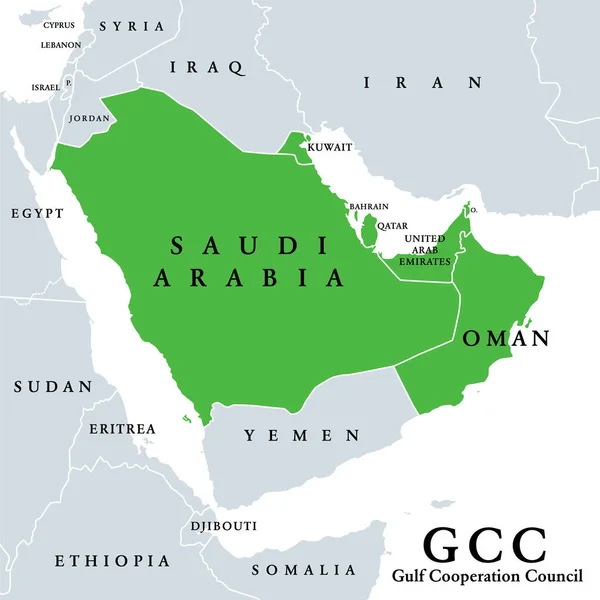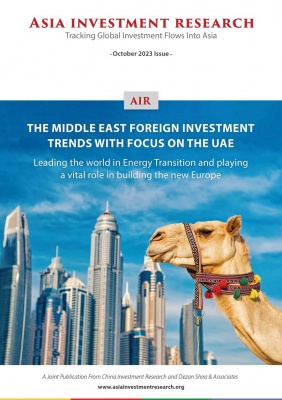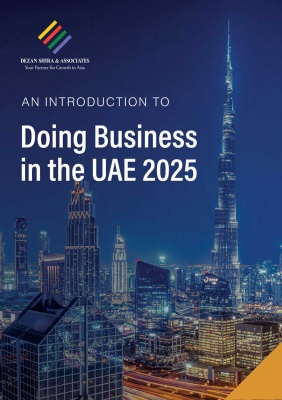Kuwait’s Economy: Opportunities, Challenges, & 2024 Outlook
Kuwait has the world’s largest sovereign wealth fund but economic reforms are still needed
By Farzad Ramezani Bonesh
Kuwait gained independence from the United Kingdom in 1961, and has since developed to become one of the most stable economies in the Middle East region after oil discoveries. It is located at the tip of the Persian Gulf and borders Iraq and Saudi Arabia. Having a small area, and more than 7% of the world’s oil reserves, it has a high-income economy and, a very affluent welfare state.
About a third of Kuwait’s 4.4 million population are Kuwaiti citizens and the rest include residents from more than 70 countries. The Ukraine crisis has led to oil prices rising and Kuwait’s economy recovering after being hit hard by the Covid-19 epidemic. Kuwait’s economic growth slowed to minus 8.9% in 2020, rising to 1.3% in 2021 and 8.7% in 2022.
Kuwait’s Future Economic Development Approach
The Kuwait Vision 2035, or “New Kuwait”, aims to transform Kuwait into a regional and international financial and commercial hub and attract global investment. Energy and oil account for more than half of Kuwait’s gross domestic product and nearly 90% of the Kuwaiti government’s income. In order to reduce fossil energy dependence, the government is working hard to look at alternatives.
The 2035 vision plan seeks economic reforms, diversification, becoming a financial and commercial center, and increasing attractiveness for foreign investors in the sector of strategy, including information technology, communication, renewable energy, electricity and water, tourism, healthcare, and education.
The new Kuwait plan includes ambitious projects to provide infrastructure, such as the development plan of the Kuwait City airport (costing about US$2 billion), power plants and water desalination facilities, the super project of the northern gate of the Gulf, the Kuwait National Railway, and related projects.
The Northern Gulf Gateway is a series of massive infrastructure projects, with the aim of transforming the less developed northern coasts of Kuwait into a regional economic logistics hub and central to attract tourists, including the construction of the Silk City and the development of the Kuwait Islands.
Kuwait’s Silk City is being built as part of China’s Belt and Road Initiative at a cost of US$132 billion. Also, Kuwait has put on the agenda a program to improve the position of this country in international indicators in 50 different global indicators such as efficient government administration, development, e-government; perception of corruption, efficiency index, settlement of disputes, regulation of appeal processes, creative human capital, and so on.
In addition, Kuwait plans to develop its non-oil sectors. The government wants to help create jobs, promote investment, issue permits, identify obstacles, provide assistance with the new foreign direct investment law, investment incentives with minimum taxes, and competitive labor.
According to the renewable energy vision program, information technology and infrastructure development services are designated as key sectors for foreign investment. The government is developing Kuwait Economic Zones (KEZs) and business opportunities in various sectors.
Kuwait has also seen massive growth with ongoing infrastructure projects valued at US$27.6 billion and an investment volume of US$10.2 billion in 2023 in energy, petrochemical, water, and infrastructure projects.
In the energy sector, Kuwait has the sixth largest oil reserves and the 20th largest gas reserves in the world. This country has announced, at a cost of US$410 billion, projects to implement strategies such as reaching an oil production capacity of 3.65 million barrels per day by 2035, completing the “Al-Zour” refinery, and investing in capital projects for energy transformation.
Kuwait announced in 2023 that it plans to increase its oil production capacity from 2.7 million barrels in the next four years to 3.15 million barrels per day.
In fact, along with increasing gas production to 1.5 billion cubic feet, oil will continue to be a vital component. By investing more than US$87 billion, especially in the building of refineries by 2030, Kuwait will become a global center for the petrochemicals industry and intends to develop an energy hub, including the mixing of resources from other countries.
Kuwait’s Trade Policy
Kuwait is a member of the Gulf Cooperation Council and part of the Greater Arab Free Trade Area (GAFTA). The government has formed its trade system based on the fundamental principles of multilateral trade and has followed the principles of the World Trade Organization.
It pursues economic growth, raising living standards and welfare, expanding production and trade of goods and services, guaranteeing Kuwait’s exports, creating opportunities, preserving the environment and so on.
Bilateral arrangements with business partners such as removing or reducing tariffs and removing non-tariff barriers to trade have taken to become the center of energy, goods, logistics, and financial services trade in the region.

Main Economic Sectors
Agriculture is very limited, representing just 0.5% of the country’s GDP and 2% of the workforce in 2022. The agriculture and fishing sector has a decreasing trend, but it is important for the government. Therefore, it pursues goals including providing food security as Kuwait is reliant on imports.
Over half of the country’s gross domestic product (45.4%) is based on oil exploitation. The Kuwait Petroleum Company (KPC) is the parent company of the government’s operations in the oil sector with several concessions in other countries. Steel production is the second largest industry in Kuwait.
The service sector, mainly real estate and financial services, employing 76% of the working population, is the largest non-oil sector of the economy, and accounts for 50% of national GDP. This sector is mainly owned by the government and gives licenses to foreign investors to participate I various sectors.
Foreign Trade
Kuwait is highly dependent on foreign trade, exporting to a numerous countries, including UAE, Saudi Arabia, China, India, and Iraq. Kuwait’s exports are mainly mineral fuels, oil, and distillate products (more than 95% of total exports and almost 50% of GDP). The largest suppliers of Kuwait goods are China (18%), the UAE, the US and Japan, and Saudi Arabia.
On the other hand, Kuwait imports most of its capital equipment, production equipment, and is especially dependent on the import of food products, consumer goods, and semi-finished products.
In the first quarter of 2023, Kuwait’s export of oil and its basic derivatives made up 93% of the total exports of this country.
Most of Kuwait’s imports include cars, phones, gold and jewellery, medicine, tobacco, cosmetics, and health products. These are mainly imported from five dominating countries, China, the United States, UAE, Saudi Arabia, and Japan.
Potential Weaknesses
Foreign investment in the Kuwaiti economy is relatively low. Foreign direct investments in Kuwait in the eight year period from March 2015 to March 2023 reached only about 1.47 billion dinars (about US$4.5 billion).
The amount of investments attracted in 2022 was about 195 million dinars (US$632 million). But investing in capital projects for energy transformation to the targetted amount of US$110 billion requires international investment cooperation.
The risk of political disagreements between the government and parliament can delay reforms and is a source of instability, weighing on the investment and reform environment.
Kuwait’s economy is also closely related to the world economy, and the effects of global economic crises can immediately impact the Kuwaiti economy and lead to sudden downturns – as was the case during covid.
The risks of the economic outlook with oil price fluctuations, dangerous global geopolitical developments, significant exchange rate fluctuations, a deeper decline in global growth, climate change, and OPEC+ oil production reduction could all result in negative impacts on Kuwait’s economy and could slow down growth. Apart from the substantial role of the US dollar in the Kuwaiti dinar, any unfavorable US monetary policy could also be transmitted to the Kuwaiti economy. The expansion of economic investment away from dependence on the United States is however occurring. The Kuwait Sovereign Wealth Fund has for example recently opened an office in Shanghai and is looking to diversify its investments.
More recent potential problems lie in any intensification of the war in Gaza; if this expands, the economic effect of the Israel-Palestine conflict will also affect Kuwait. Oil is still the main export of the country, and delays in structural reforms would hinder progress towards diversifying the economy.
Elsewhere, reforms are needed. The share of the private sector in Kuwait’s economy is only 25%. Corrective measures are needed to strengthen governance and business environment, increase competition and promote investment, invest in human capital, strengthen financial governance and transparency, increase labor productivity, and grow the non-oil private sector.
Kuwait issued a National Adaptation Plan 2019-2030 and committed to achieving net zero goals by about 2050. But due to the dominance of oil in Kuwait’s economy, this may prove a tough target to reach.
Opportunities and Prospects
According to 2023 statistics, Kuwait ranks first among the GCC countries in indicators of living conditions, including prosperity, wealth, material and essential goods, and related measurements of affluence.
A 25% increase in Kuwait’s foreign exchange and foreign deposits abroad, an increase in Kuwait’s Special Drawing Right from the International Monetary Fund, overall GDP growth to 8.2% in 2022, low government debt, and a decrease in inflation in September to 3.7% are all good news for Kuwait.
A stable banking system that is resistant to severe shocks, strengthening financial and foreign balances, increasing the overall financial surplus to 22.5% of the GDP in 2022, maintaining financial stability, growth in bank credit and the Central Bank of Kuwait (CBK), have also been positive. Also, economic recovery and non-oil growth remained strong in 2023 with lower inflation and a large current account surplus, and steps were taken towards the national integration and anti-corruption strategy.
The government’s plan to create a new independent fund to support local economies and diversification is a positive step towards the implementation of economic reforms.
The assets of the Kuwait Investment Organization are being considered as financial support. The General Reserve Fund (GRF) is the Future Generations Fund (FGF) managed by the Kuwait Investment Authority (KIA). In 2022, this was the world’s third-largest sovereign wealth fund with US$738 billion in assets under management and investment.
In addition, Kuwait’s foreign policy includes significant four goals: ensuring security, ensuring stability in the region, solving border problems with neighbors, relations and developing alliances with the global community, establishing friendly relations with new partners, and helping to develop global economic diplomacy and trade development. Kuwait wants to be part of a multipolar global society.
The search for a solution to the internal political deadlock between the government and the parliament has also been useful. Signs of a decline in the oil sector were evident from November 2022, although the non-oil sector maintained its growth in 2023.
The economic diversification program and the introduction of value-added tax will enable Kuwait to diversify its revenues.
Kuwait’s long-term challenges are related to oil dependence, diversification, and the timely implementation of reforms, but the country’s economic resilience is underpinned by significant foreign assets.
Fitch has affirmed Kuwait’s rating (IDR) at ‘AA-‘ with a stable outlook, despite fiscal and structural challenges stemming from heavy dependence on oil, a generous welfare state, and large public sector, and low governance indicators.
Kuwait has a large wealth management industry and Kuwaiti investment companies have invested increasing amounts of financial assets overseas. Apart from the role of the Kuwait Fund for Arab Economic Development, Kuwaiti financial institutions are increasingly paying attention to emerging markets.
Growth and public investment to increase in 2024. Kuwait’s GDP is expected to increase by US24.2 billion between 2023 and 2028 and reach US$183.9 billion dollars. It also appears that non-oil GDP growth and inflation will decrease in 2024. Kuwait should be fine with the capital reserves it has to make a transition to a more balanced economy, but much remains to be done. The changes underway in the UAE may well be a pointer as concerns Kuwait’s future development, although Kuwait also needs to provide a different set of investment motivations and secure its own uniqueness in regional development.
About Us
Dezan Shira & Associates assist foreign investors into the Middle East and have a partner firm in Kuwait. For assistance, please contact us at dubai@dezshira.com and refer to our Middle East guide below.
Related Reading
- Gulf Cooperation Council Set To Introduce GCC Visa Valid For UAE, Saudi Arabia, Bahrain, Kuwait, Qatar, and Oman
- Kuwait Unveils Fourth 2040 Development Master Plan
 The 2023 / 24 Middle East – Foreign Investment Trends
The 2023 / 24 Middle East – Foreign Investment Trends
About Us
Middle East Briefing is one of five regional publications under the Asia Briefing brand. It is supported by Dezan Shira & Associates, a pan-Asia, multi-disciplinary professional services firm that assists foreign investors throughout Asia, including through offices in Dubai (UAE), China, India, Vietnam, Singapore, Indonesia, Italy, Germany, and USA. We also have partner firms in Malaysia, Bangladesh, the Philippines, Thailand, and Australia.
For support with establishing a business in the Middle East, or for assistance in analyzing and entering markets elsewhere in Asia, please contact us at dubai@dezshira.com or visit us at www.dezshira.com. To subscribe for content products from the Middle East Briefing, please click here.
- Previous Article Germany’s trade with the GCC, 2023/24 Status and Prospects
- Next Article The Philippines Enters Islamic Financing Sukuk Bond Market


